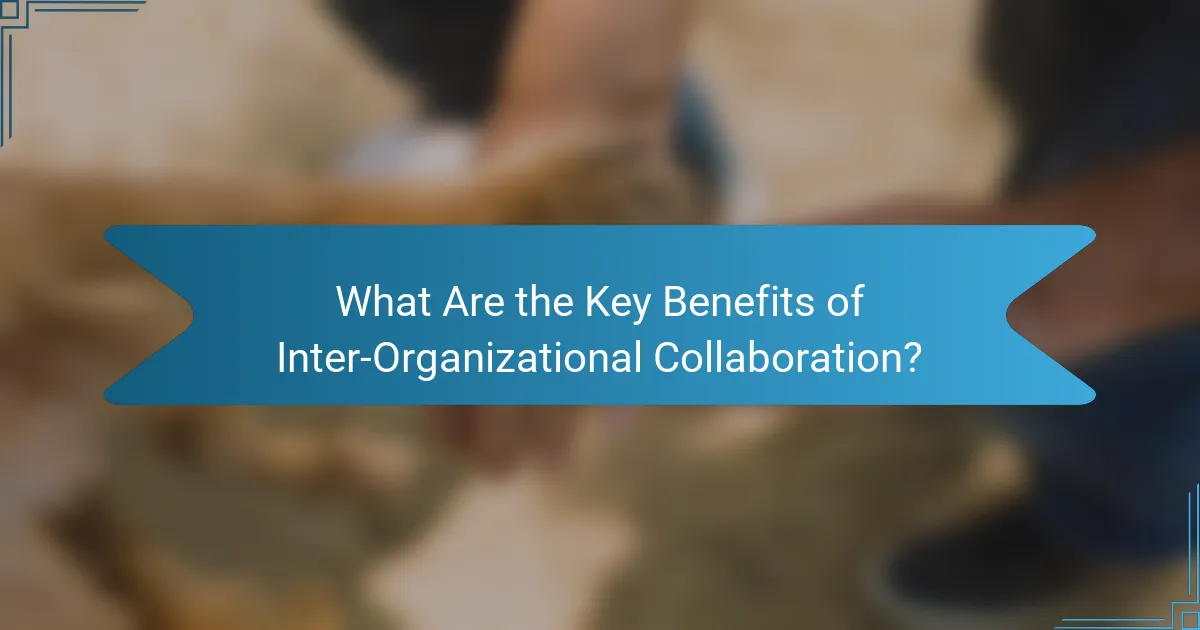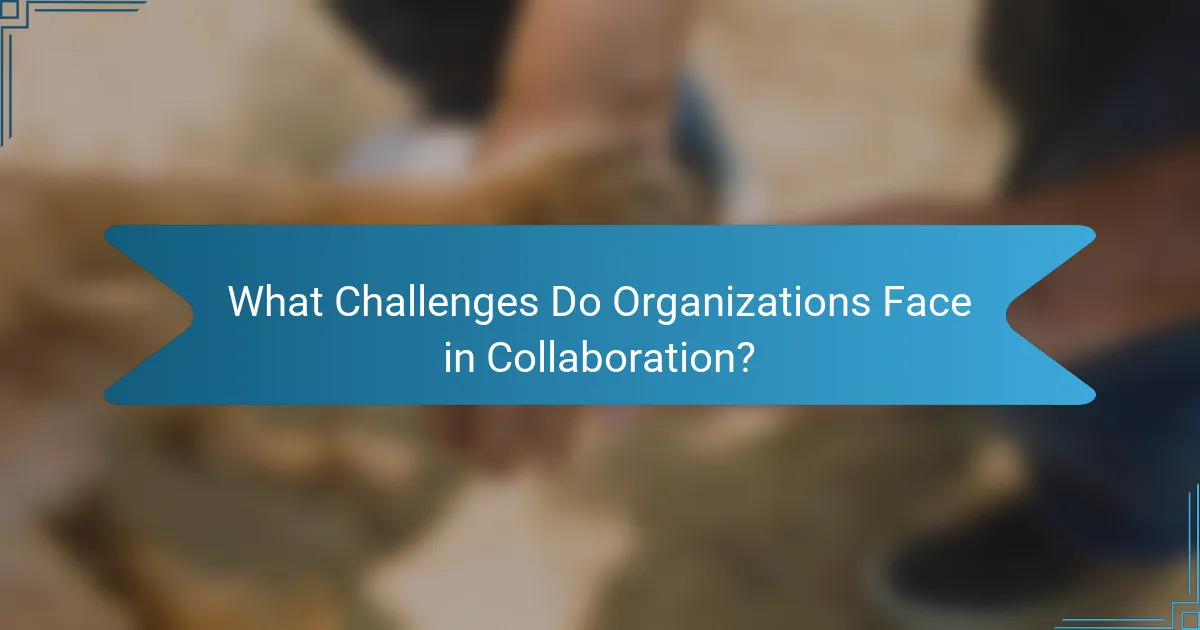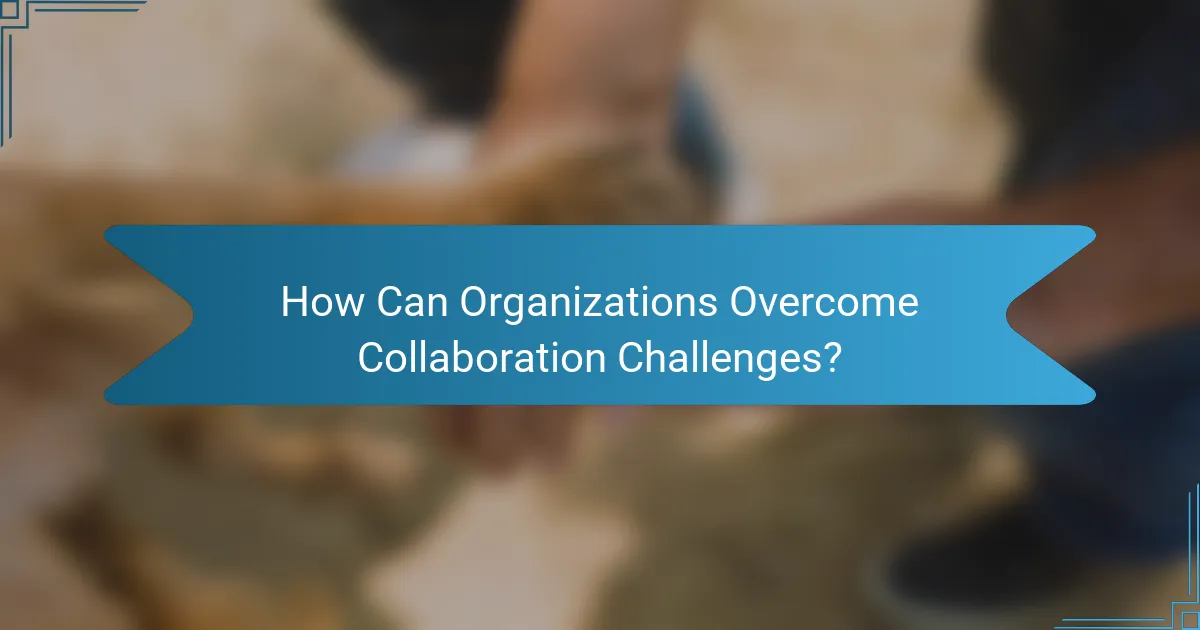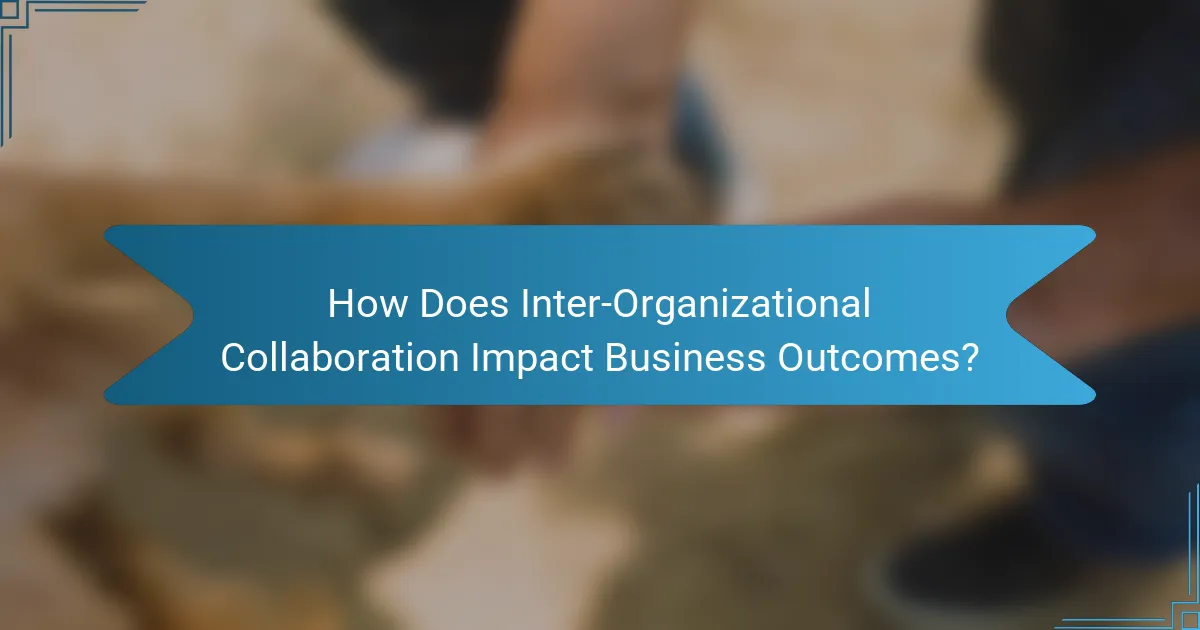Inter-organizational collaboration is a powerful approach that can lead to enhanced innovation, increased efficiency, and improved problem-solving among partnering organizations. However, it also presents challenges such as cultural differences and communication barriers that must be navigated to ensure success. By implementing effective strategies to address these issues, organizations can unlock the full potential of their collaborative efforts.

What Are the Key Benefits of Inter-Organizational Collaboration?
Inter-organizational collaboration offers several key benefits, including enhanced innovation, increased efficiency, broader resource access, improved problem-solving, and stronger relationships. These advantages can significantly impact the success and sustainability of organizations working together.
Enhanced Innovation
Collaboration between organizations fosters a culture of innovation by combining diverse perspectives and expertise. This cross-pollination of ideas often leads to creative solutions that may not emerge within a single entity. For example, tech companies partnering with research institutions can accelerate product development through shared knowledge.
To maximize innovation, organizations should establish clear communication channels and encourage open dialogue. Regular brainstorming sessions and workshops can help generate new ideas and refine existing ones.
Increased Efficiency
Inter-organizational collaboration can streamline processes and reduce redundancies, leading to increased efficiency. By sharing resources and best practices, organizations can optimize operations and minimize costs. For instance, joint procurement initiatives can lead to bulk purchasing discounts.
To achieve efficiency, organizations should identify overlapping functions and areas for collaboration. Setting measurable goals and tracking progress can help ensure that efficiency gains are realized.
Broader Resource Access
Collaborating with other organizations provides access to a wider range of resources, including funding, technology, and talent. This expanded access can enhance capabilities and drive growth. For example, a small startup may gain access to advanced technology through partnerships with larger firms.
Organizations should actively seek out partnerships that complement their strengths and fill gaps in their resources. Building a network of collaborators can lead to more opportunities for resource sharing.
Improved Problem-Solving
Inter-organizational collaboration enhances problem-solving by bringing together diverse teams with varied expertise. This collective intelligence allows for more comprehensive analysis and innovative solutions to complex challenges. For instance, a consortium of companies might tackle industry-wide issues like sustainability together.
To improve problem-solving, organizations should create multidisciplinary teams that include members from different backgrounds. Encouraging a culture of trust and openness can facilitate effective collaboration and idea generation.
Stronger Relationships
Building strong relationships through collaboration can lead to long-term partnerships and mutual benefits. Trust and rapport developed during collaborative projects can enhance future interactions and create a supportive network. For example, organizations that frequently collaborate may find it easier to navigate challenges together.
To strengthen relationships, organizations should prioritize transparency and communication. Regular check-ins and feedback sessions can help maintain alignment and foster a collaborative spirit.

What Challenges Do Organizations Face in Collaboration?
Organizations often encounter several challenges when collaborating, including cultural differences, communication barriers, trust issues, and conflicts over resource allocation. Addressing these challenges is crucial for successful inter-organizational collaboration.
Cultural Differences
Cultural differences can significantly impact collaboration, as varying values, beliefs, and practices influence how organizations operate. For instance, a company from a hierarchical culture may struggle to adapt to a more egalitarian partner, leading to misunderstandings.
To navigate cultural differences effectively, organizations should invest in cultural awareness training and encourage open discussions about values and expectations. This can help create a more inclusive environment that respects diverse perspectives.
Communication Barriers
Communication barriers often arise from differences in language, jargon, or communication styles, which can lead to misinterpretations and frustration. For example, technical terms familiar to one organization may be unfamiliar to another, hindering effective dialogue.
To overcome communication barriers, organizations should establish clear communication protocols and utilize simple language. Regular check-ins and feedback loops can also ensure that all parties are on the same page and can address any issues promptly.
Trust Issues
Trust issues can hinder collaboration, as organizations may be hesitant to share sensitive information or rely on partners. This lack of trust can stem from past experiences or concerns about differing objectives.
Building trust requires transparency and consistent communication. Organizations can foster trust by setting clear expectations, delivering on commitments, and engaging in joint problem-solving activities to strengthen relationships over time.
Resource Allocation Conflicts
Resource allocation conflicts occur when organizations disagree on how to distribute resources, such as funding, personnel, or time. These conflicts can arise from differing priorities or perceived inequities in contributions.
To mitigate resource allocation conflicts, organizations should establish a collaborative framework for decision-making that includes all stakeholders. Regular assessments of resource needs and contributions can help ensure fairness and alignment with shared goals.

How Can Organizations Overcome Collaboration Challenges?
Organizations can overcome collaboration challenges by implementing effective strategies that enhance communication, culture, and technology use. By addressing these key areas, teams can work together more efficiently and achieve common goals.
Establish Clear Communication Channels
Clear communication channels are essential for successful collaboration. Organizations should define specific methods for sharing information, such as regular meetings, emails, or collaboration platforms. This ensures that all team members are on the same page and reduces misunderstandings.
Consider using a mix of synchronous and asynchronous communication methods. For instance, schedule weekly video calls for real-time discussions while utilizing project management tools for ongoing updates. This balance can accommodate different working styles and time zones.
Foster a Collaborative Culture
A collaborative culture encourages teamwork and open dialogue among employees. Leaders should promote values such as trust, respect, and inclusivity, which help create an environment where individuals feel comfortable sharing ideas and feedback. Recognizing and rewarding collaborative efforts can further reinforce this culture.
To foster collaboration, organizations can organize team-building activities or workshops that focus on problem-solving and innovation. These initiatives help break down silos and encourage cross-departmental cooperation, ultimately leading to better outcomes.
Utilize Collaboration Tools
Collaboration tools streamline communication and project management, making it easier for teams to work together. Popular platforms like Slack, Microsoft Teams, or Asana can facilitate real-time discussions, file sharing, and task tracking. Choosing the right tools depends on the specific needs of the organization and its teams.
When selecting collaboration tools, consider factors such as user-friendliness, integration capabilities, and cost. It’s beneficial to involve team members in the decision-making process to ensure the chosen tools meet their requirements and enhance productivity.

What Are Effective Collaboration Tools for Organizations?
Effective collaboration tools enable organizations to communicate, share information, and manage projects efficiently. These tools streamline workflows, enhance teamwork, and can significantly improve productivity across teams.
Microsoft Teams
Microsoft Teams is a comprehensive collaboration platform that integrates chat, video conferencing, and file sharing. It is particularly beneficial for organizations already using Microsoft 365, as it allows seamless integration with other Microsoft applications like Word, Excel, and SharePoint.
Key features include threaded conversations, customizable channels, and the ability to schedule meetings directly within the app. Organizations should consider its robust security features, which comply with various regulations, making it suitable for industries like finance and healthcare.
Slack
Slack is a messaging platform designed for team communication and collaboration. It offers channels for organized discussions, direct messaging, and integration with numerous third-party applications, enhancing its functionality.
Its user-friendly interface and powerful search capabilities make it easy to find past conversations and shared files. However, organizations should be mindful of potential information overload due to the volume of messages, so establishing clear communication guidelines is essential.
Trello
Trello is a visual project management tool that uses boards, lists, and cards to help teams organize tasks. It is particularly effective for tracking project progress and assigning responsibilities within teams.
Users can easily move cards between lists to reflect task status, making it intuitive for team members. While Trello is great for smaller projects, larger teams may find it beneficial to integrate it with other tools for enhanced functionality.
Asana
Asana is a task management tool that helps teams plan, organize, and track their work. It allows users to create tasks, assign them to team members, and set deadlines, providing a clear overview of project timelines.
Asana’s features include project templates, timelines, and reporting tools, which can help teams stay on track. Organizations should consider its scalability, as it can accommodate both small teams and larger enterprises effectively.

How Does Inter-Organizational Collaboration Impact Business Outcomes?
Inter-organizational collaboration significantly enhances business outcomes by fostering innovation, improving efficiency, and expanding resources. By working together, organizations can leverage each other’s strengths, leading to increased competitiveness and market adaptability.
Increased Market Reach
Collaborating with other organizations can greatly expand market reach by combining networks and resources. This partnership allows businesses to access new customer segments and geographical areas that may have been previously unattainable.
For instance, a technology firm partnering with a local distributor can tap into regional markets more effectively than going solo. This strategy often results in shared marketing efforts, which can reduce costs while maximizing visibility.
To maximize market reach through collaboration, companies should identify partners with complementary strengths and align their goals. Regular communication and joint marketing initiatives can further enhance the effectiveness of these partnerships.



